UN Documents and Belgian Peacekeeper Implicate French Authorities in Rwanda Genocide | Des documents de l’ONU et un casque bleu belge impliquent les autorités françaises dans le génocide à Rwanda
Damning document buried in UN archives
The list of Rwandan army weapons in which the French missiles appear was assembled before the genocide, then it was forgotten for two decades.
By Linda Melvern
Liberation (French)
English | French
Translated from the French by Dady Chery for Haiti Chery
It is a simple list enumerating the stocks of weapons, without any comment. For nearly twenty years, it was in the United Nations archives in New York. Now, suddenly disinterred from oblivion, the recovery of this document raises some troubling questions about France’s role in the attack that killed Rwandan President Juvenal Habyarimana on April 6, 1994.

A Rwandan girl visits the graves of some of the 800,000 people killed in the 1994 genocide (Photo credit: AP).
That evening, the presidential plane was starting its descent over Kigali, when it was shot by two missiles. Responsibility was never claimed for the attack, but in the hours that followed, a killing machine started: the Tutsi genocide had begun; it would last three months and cause nearly one million victims. The Hutu president was assassinated, and in the name of an alleged “spontaneous revenge,” the higher-ups from the presidential camp justified the systematic massacre of the Tutsi minority collectively accused of murdering the head of state.
In fact, since then, there have been two opposite camps of belief: those who think that Habyarimana was assassinated by some of his relatives anxious to see him agree to share power, and those who believe he was killed by rebels from the Rwandan Patriotic Front (RPF), a Tutsi guerrilla movement with which Habyarimana was anxious to make peace. Now, after nearly twenty years, those who accuse the RPF repeatedly assert that the Rwandan army did not have missiles before the genocide and did not use them. Unlike the RPF rebels.
Denials. It is this argument that is undermined by the document unearthed from the UN archives. A list detailing the stocks of weapons on the eve of the genocide reveals that the Rwandan army was then in possession of an “undetermined” number of “SA-7 surface to air missiles” and “15 Mistral-Air missiles”: weapons of French origin.
Although nothing so far can confirm that the former were the missiles used in the attack, the information is in flagrant contradiction of the numerous denials and official statements over subsequent years, arguing that “the Hutu camp had no missiles,” as was again repeated in January by the Socialist Hubert Vedrine, Secretary General to the President of the Republic [Francois Mitterand] during the genocide. Francois Leotard was the Defense Minister. In a July 7, 1998 hearing of the Parliamentary Commission of Inquiry on the role played by France in Rwanda between 1990 and 1994, Leotard also testified that
“no information indicates the presence of ground-air launchers in FAR [Rwandan army] equipment between 1991 and 1994.”
The presence of Mistral missiles in the arsenal of the government army had already been noted. But it was never confirmed by UN official sources before the launch of the massacre of the Tutsis. It was the UNAMIR military observers — the observer mission of the UN in Rwanda sent a few months before the genocide — who delved into the weapons stockpiles during the inspections they conducted pending the implementation of peace agreements. In early May, General Romeo Dallaire, then commander of UNAMIR, confirmed the authenticity of the list drafted after inspection of the stocks… on the very day of the attack.
Threat. But then, why has the UN never mentioned this list? Soon, while the origin of the missile is not yet an issue, other emergencies drown the document. A copy lands in New York a few weeks after the genocide. The list is forwarded especially to the U.S. delegation in the UN. Next, it is appended to another document: an eight-page analysis dated September 1, 1994 and titled: “Former Rwandan army: capabilities and intentions.” By then the genocide has stopped. The concerns have shifted: the remainder of the government army and militias involved in the massacre have fled Rwanda and found exile in the former Zaire (now Democratic Republic of Congo). From there, they threaten to unleash an offensive against Rwanda, now under RPF control.
On the fourth page of the analysis, missiles in the possession of the Rwandan army are discussed again, but this time in the context of the threat they still pose to the region. The document is sent to Kofi Annan, then head of the Operations Department of UN Peacekeeping and the UN representative in Kigali. After this, it is saved in the archives. The list and analysis are apparently quickly forgotten.
The bombing in April 1994 would never even get a casual international investigation. It took until 1998 for a judicial investigation to be opened in France. Judge Jean-Louis Bruguiere then favors the thesis of missiles belonging to the RPF and readily accepts the idea that the Rwandan forces had none. Then, from 2007, the case is assigned to judges Marc Trevidic and Nathalie Poux. Unlike their predecessors, the two judges go to the crash site in September 2010. But the expert report of this mission also dismisses, from the outset, that a Mistral missile could have been used in the attack, since “the first export order” dates from “1996” – and before that year, France was not permitted to export these weapons.
The missiles on the UNAMIR list, would they have then been provided despite the official ban? Following the same reasoning (the export ban in force), an “investigative report” by the Belgian Army dated August 1, 1994 also shied, on principle, from the Mistral track. However, the authors’ conclusions specified that if their use in the attack of April 6, 1994 was ever finally proven, such information
“would imply the complicity of the authorities of a country that possessed or manufactured them.”
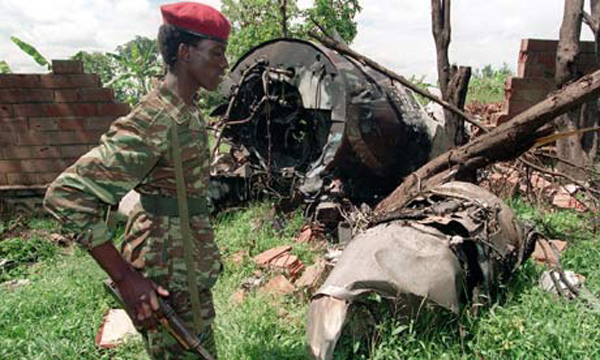
The wreckage of the plane that was shot down killing Rwanda’s president Juvénal Habyarimana in 1994 (Photo credit: AP/Jean Marc Boujou).
Troubling testimony from Belgian UN sergeant
On April 5, 1994, peacekeeper Yves Teyssier witnessed the preparations for the attack
By Linda Melvern
Liberation
English | French
Translated from the French by Dady Chery for Haiti Chery
In addition to the possession of Mistral missiles by the Rwandan Armed Forces (FAR), other avenues remained unexplored by justice. This included the testimonies of former peacekeepers who in April 1994 belonged to the UN Mission for Assistance in Rwanda (UNAMIR), which had been in the country since October 1993 to ensure compliance with the peace agreements signed by Habyarimana and the Tutsi rebels of the RPF.
Although the hatchet had been officially buried since August 1993, power sharing and the establishment of new institutions continually stumbled against the delaying tactics of the presidential camp, which was in no hurry to confer its powers to the RPF or the internal opposition. Because of these continual postponements, the situation was very tense in early April, marked by assassinations and outbreaks of violence that caused difficulties for UNAMIR.
Roadblock. It is in this context that Yves Teyssier, a Belgian paramilitary commando in Kigali in April 1994, found himself in a unique position on April 5, twenty-four hours before the attack and the killings began. At the time, his main duty was to patrol around Kanombe to ensure a visible UN presence in a strategic perimeter. Kanombe was not an insignificant part of Kigali: it is in this area of the capital that one finds not only the residence of the Head of State and the airport, but also the main camp of the presidential guard. Until that famous evening, the patrols attended by Sergeant Teyssier had gone on without a hitch, despite the tense atmosphere that prevailed elsewhere in the town.
That evening, the convoy for inspecting the Kanombe area consisted of a small truck with nine peacekeepers on board and a Jeep. The patrol was scheduled to last two hours, from 20:00 to 22:00. The small team was already at Camp Kanombe when it was denied access to the one-way roads toward the valley below. A roadblock was curiously erected in the middle of the road, as if to deter all intruders. The peacekeepers tried to argue the merits of their mission, but no discussion seemed possible: the Rwandan soldiers remain intractable.
Trenches. At the main gate of the camp, Teyssier noted that artillery had just been installed, and machine guns were in place. Soldiers were positioned in freshly dug trenches. Soon thereafter the peacekeepers turned around thinking perhaps they would be able to sort out the situation in the coming days.
Meanwhile Teyssier is sent on a mission to the north the next day. It is then that he hears on the radio network of UNAMIR the voice of one of his colleagues. The latter is on duty at the airport in Kigali: more precisely on a platform of the second floor of the old control tower. It is April 6 and he has just seen the first missile miss the aircraft and the second hit its target a little below the left wing. Sergeant Teyssier realizes that something is wrong with the situation and recalls the incident at Camp Kanombe the previous day.
If Teyssier’s testimony has so far escaped the notice of judges Trévidic and Lice, charged with the investigation in Paris, his colleague at the airport was also heard by the Belgian military service in 1994. He had already confirmed, even then, that the shots had come from the Kanombe military camp… long before the Parisian expert judges also began to favor this line of thinking.
Sources: Liberation (part 1, French) | Liberation (part 2, French) | Haiti Chery (English)
Related:
– Rwandan Leader Paul Kagame Blasts West for Harboring Genocide Suspects
Un document compromettant enterré dans les archives de l’ONU
La liste des armes de l’armée rwandaise, dans laquelle apparaissent les missiles français, a été établie avant le génocide, puis a été oubliée durant deux décennies.
Par Linda Melvern
Liberation
anglais | français
C’est une simple liste qui énumère des stocks d’armes, sans aucun commentaire. Depuis près de vingt ans, elle se trouvait dans les archives des Nations unies, à New York. Aujourd’hui, soudain exhumé de l’oubli, ce document relance quelques questions troublantes sur le rôle de la France dans l’attentat qui a coûté la vie au président rwandais Juvénal Habyarimana, le 6 avril 1994.

Une jeune fille rwandaise visite les tombes de quelques-uns des 800.000 personnes qui furent tuées dans le génocide de 1994 (Crédit de photo: AP).
Ce soir-là, l’avion présidentiel amorce sa descente sur Kigali, lorsqu’il est abattu par deux tirs de missiles sol-air. L’attentat ne sera jamais revendiqué mais, dans les heures qui suivent, une machine de mort se met en marche : le génocide des Tutsis vient de commencer, il va durer trois mois et faire près d’un million de victimes. Le président assassiné était hutu, et c’est au nom d’une prétendue «vengeance spontanée», que les ultras du camp présidentiel vont justifier le massacre systématique de la minorité tutsie, collectivement accusée du meurtre du chef de l’Etat.
En réalité, depuis cette époque, deux camps s’opposent : ceux qui croient que Habyarimana a été assassiné par certains de ses proches, inquiets de le voir accepter de partager le pouvoir, et ceux qui pensent qu’il a été tué par les rebelles du Front patriotique rwandais (FPR), un mouvement de guérilla tutsi avec lequel Habyarimana était justement pressé de faire la paix. Or, depuis vingt ans, ceux qui accusent le FPR assènent de manière répétée que l’armée rwandaise ne disposait pas de missiles avant le génocide et ne savait pas s’en servir. Contrairement aux rebelles du FPR.
Démentis. C’est cet argument qui risque d’être mis à mal par le document exhumé des archives de l’ONU. Car la liste qui détaille les stocks d’armement à la veille du génocide révèle que l’armée rwandaise était alors en possession d’une quantité «indéterminée» de «missiles sol-air de type SA-7» et de «15 missiles sol-air Mistral». Des armes d’origine française. Même si rien ne permet à ce jour d’attester que ce sont ces missiles-là qui ont servi à l’attentat, l’information est en contradiction flagrante avec les nombreux démentis et déclarations officielles qui se sont succédé depuis plusieurs années, affirmant que «le camp hutu n’avait pas de missiles», ainsi que l’a encore répété en janvier le socialiste Hubert Védrine, secrétaire général de la présidence de la République au moment du génocide. François Léotard, lui, était ministre de la Défense. Le 7 juillet 1998, lors de son audition par une mission d’information parlementaire sur le rôle joué par la France au Rwanda entre 1990 et 1994, il certifie lui aussi qu’«aucune information n’atteste la présence de lanceurs sol-air dans l’équipement des FAR [Forces armées rwandaises] entre 1991 et 1994».
La présence de missiles Mistral dans l’arsenal de l’armée gouvernementale avait pourtant déjà été mentionnée. Mais jamais attestée de source officielle onusienne avant que soit lancé le massacre des Tutsis. Ce sont des observateurs militaires de la Minuar, la mission d’observation de l’ONU envoyée au Rwanda quelques mois avant le génocide, qui ont compulsé la liste des stocks d’armes dans le cadre des inspections qu’ils effectuaient en attendant l’application des accords de paix. Début mai, le général Roméo Dallaire, à l’époque commandant en chef de la Minuar, a confirmé l’authenticité de cette liste qui, après inspection des stocks, a été finalement rédigée… le jour même de l’attentat.
Menace. Mais alors pourquoi l’ONU n’a-t-elle jamais fait mention de cette liste ? Très vite, le document se noie dans d’autres urgences, à une époque où l’origine des missiles n’est pas encore un enjeu. Une copie atterrit bien à New York, quelques semaines après le déclenchement du génocide. La liste est notamment transmise à la délégation américaine auprès de l’Organisation des nations unies. Ensuite, elle se trouve annexée à un autre document : une synthèse de huit pages datée du 1er septembre 1994 et intitulée : «Ancienne armée rwandaise : capacités et intentions». A cette date, le génocide a été arrêté. Les inquiétudes se sont déplacées : le reliquat de l’armée gouvernementale et des miliciens impliqués dans le massacre ont fui le Rwanda et se trouvent en exil dans l’ex-Zaïre (l’actuelle république démocratique du Congo). D’où ils menacent de déclencher une offensive contre le Rwanda, passé sous le contrôle du FPR.
A la quatrième page de la synthèse, des missiles en possession de l’armée rwandaise sont à nouveau évoqués, mais cette fois dans le contexte de la menace qu’ils font encore peser sur la région. Le document est transmis à Kofi Annan, alors à la tête du département des opérations de maintien de la paix des Nations unies, puis au représentant de l’ONU à Kigali. A la suite de quoi, il est enregistré dans les archives. La liste et la synthèse sont apparemment vite oubliées.
L’attentat d’avril 1994 ne fera jamais fait l’objet de la moindre enquête internationale. Il aura fallu attendre 1998 pour qu’une information judiciaire soit ouverte en France. Le juge Jean-Louis Bruguière privilégie alors la thèse des missiles appartenant au FPR et accepte d’emblée l’idée que les forces armées rwandaises n’en avaient pas. Puis, à partir de 2007, le dossier est confié aux juges Marc Trévidic et Nathalie Poux (lire page 4). Contrairement à leur prédécesseur, les deux magistrats se rendent, en septembre 2010, sur le site du crash. Mais le rapport d’expertise de cette mission exclut lui aussi dès le début qu’un missile Mistral ait pu être utilisé dans l’attentat, puisque «la première commande à l’export» date de «1996» – avant cette année-là, la France n’était pas autorisée à exporter ces armes.
Les missiles qui figurent sur la liste de la Minuar auraient-ils alors été fournis en dépit de l’interdiction officielle ? Au nom du même raisonnement (l’interdiction d’exportation en vigueur), un «rapport d’enquête» de l’armée belge daté du 1er août 1994 écartait lui aussi par principe la piste des Mistral. Toutefois, les auteurs précisaient en conclusion que si jamais leur utilisation dans l’attentat du 6 avril 1994 était finalement avérée, une telle information «impliquerait la complicité des autorités d’une nation qui en possède ou en produit».

L'épave de l'avion qui a été abattu en tuant le Président du Rwanda Juvénal Habyarimana le 6 avril 1994 (Crédit de photo: AP/Jean-Marc Boujou).
Le troublant témoignage du sergent belge
Le 5 avril 1994, le Casque bleu Yves Teyssier aurait assisté aux préparatifs de l’attentat
Par Linda Melvern
Liberation
anglais | français
Outre la possession de missiles Mistral par les forces armées rwandaises, d’autres pistes demeurent encore inexplorées par la justice. Notamment des témoignages d’anciens Casques bleus qui, en avril 1994 se trouvaient incorporés au sein de la Mission des Nations unies pour l’assistance au Rwanda (Minuar), dans le pays à partir d’octobre 1993 pour veiller au respect des accords de paix signés entre le régime de Habyarimana et les rebelles tutsis du FPR.
Même si la hache de guerre était officiellement enterrée depuis août 1993, le partage du pouvoir et la mise en place des nouvelles institutions butaient continuellement sur les manœuvres dilatoires du camp présidentiel, peu pressé de céder ses prérogatives au FPR comme à l’opposition interne. En raison de ces reports constants, la situation était très tendue en ce début avril, marqué par des assassinats et des explosions de violences qui compliquaient la tâche de la Minuar.
Barrage. C’est dans ce contexte qu’Yves Teyssier, un para-commando belge en poste à Kigali en avril 1994, a vécu une situation singulière le 5 avril, soit vingt-quatre heures seulement avant l’attentat et le début des massacres. A l’époque, sa mission principale consiste à patrouiller autour de Kanombé, pour assurer une présence ostensible de l’ONU dans un périmètre stratégique. Car Kanombé n’est pas un endroit anodin à Kigali : c’est dans cette partie de la capitale que se trouvent la résidence du chef de l’Etat, l’aéroport, mais aussi le principal camp de la garde présidentielle. Jusqu’à cette fameuse soirée, les patrouilles auxquelles participait le sergent Teyssier s’étaient déroulées sans la moindre anicroche, malgré le climat tendu qui prévalait ailleurs en ville.
Ce soir-là, le convoi qui inspecte la zone de Kanombé se compose d’un petit camion avec neuf Casques bleus à bord et d’une Jeep. Sa patrouille est prévue pour durer deux heures, de 20 heures à 22 heures. La petite équipe se trouve déjà au niveau du camp de Kanombé quand on lui refuse l’accès aux routes à voie unique menant vers la vallée en contrebas. Un barrage a été curieusement érigé au milieu de la route, comme si on voulait dissuader toute intrusion. Les Casques bleus tentent bien de faire valoir le bien-fondé de leur mission, mais aucune discussion ne semble possible : les militaires rwandais restent intraitables.
Tranchées. A la porte principale du camp, Teyssier constate alors que des pièces d’artillerie viennent d’être installées, ainsi que des emplacements de mitrailleuses. Des soldats sont positionnés dans des tranchées fraîchement creusées. Sur le coup pourtant, les Casques bleus font demi-tour. Ils pensent peut-être avoir le temps d’analyser la situation les jours suivants.
Teyssier, pour sa part, est envoyé en mission dès le lendemain dans le nord du pays. C’est alors qu’il entend sur le réseau radio de la Minuar la voix d’un de ses collègues. Ce dernier se trouve en faction à l’aéroport de Kigali, plus précisément sur une plateforme du deuxième étage de l’ancienne tour de contrôle. Nous sommes le 6 avril et il vient de voir le premier missile manquer l’avion tandis que le second touchait sa cible, un peu en dessous de l’aile gauche. Le sergent Teyssier réalise que la situation dérape et repense à l’incident de la veille au camp Kanombé.
Si son témoignage a pu échapper jusqu’à présent aux juges Trévidic et Poux, en charge de l’enquête à Paris, son collègue de l’aéroport a été entendu par les services militaires belges dès 1994. Il affirmait alors déjà que les tirs provenaient du camp militaire de Kanombé. Bien avant que les experts des juges parisiens privilégient cette piste eux aussi.
Sources: Liberation (1ère partie) | Liberation (2ème partie)
Lisez aussi:
– Kagame accuse l’Occident de ne pas poursuvire des génocidaires


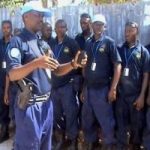
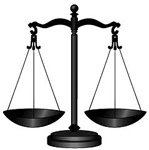
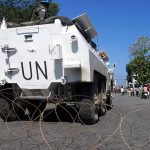
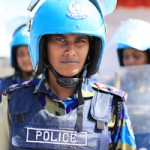
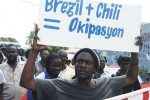

Really? Really? after 18 years with all the evidence in the ICTR? The weapons list totally discredited? The missiles serial numbers and origins traced? Or do you deny this information and label anybody “genocidaires”or “historical revisionists” who disagree? Howe much are they paying you from Rwanda?
Indeed. Really. The documents discussed in the article are 18 years old but were only recently discovered. They are bound to unearth new “genocidaires”, some of them former high-level French officials, others from the old Rwandan armed forces (FAR). Does this worry you? My work is entirely volunteered: a hobby of mine, spreading the historical truth.